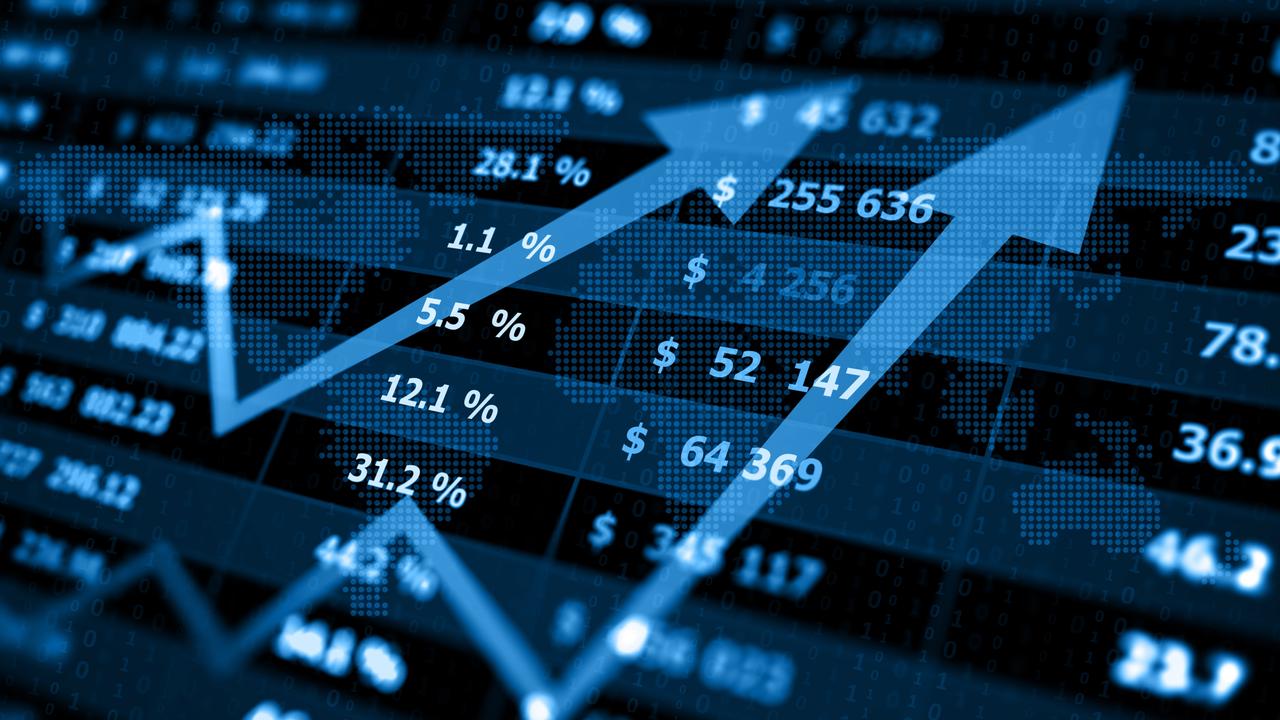Relief from ‘carry trade’ carnage as Japanese stocks rebound
Australian stocks recovered slightly as the global risk appetite improved amid a massive rebound in the Japanese market that brought relief from the carnage that unfolded on Monday.

Australian stocks recovered slightly on Tuesday as the global risk appetite improved amid a massive rebound in the Japanese market that brought relief from the carnage that unfolded on Monday.
After plunging 5.8 per cent in a $180bn wipe-out that marked the worst two-day fall since the start of the Covid-19 pandemic in early 2020, the S&P/ASX 200 index closed up 31 points or 0.4 per cent at 7680.6 points on Tuesday but volatility remained extremely high in global markets.
The consumer discretionary, financials, property and industrials sectors that were battered on Monday were among the best performers, with Wesfarmers up 2.3 per cent, CBA up 2.2 per cent, Goodman Group up 2.2 per cent and Brambles up 1.8 per cent.
Australian stocks rebounded even as the Reserve Bank pushed back on rate cut talk.
The modest rebound came as Japan’s Nikkei 225 benchmark soared 10.2 per cent to 34,260 points as investors doubted that the Bank of Japan would press ahead with interest rate hikes, after the index plunged 12.4 per cent on Monday in its worst day since the 1987 crash.
That was enough to spark hopes of a rebound on Wall Street.
S&P 500 futures were up about 1 per cent in late Asia-Pacific trading after the US benchmark dropped 3 per cent on Monday.
US recession fears flared last week after a disappointing ISM Manufacturing survey and weaker-than-expected non-farm payrolls report, exacerbating a nascent “unwind” of large-scale “carry trades” in the Japanese yen by investors as the Bank of Japan began lifting interest rates recently.
A recovery in global risk assets started on Monday night after the US ISM Services survey indicated US recession fear was premature.
Volatility was highlighted by a spike in the CBoE VIX index of volatility on S&P 500 futures to a record high of 65 per cent on Monday. At Monday’s closing level of 38.57 per cent, the VIX index implied the S&P 500 could have daily price swings of 2.4 per cent and a renewed sell-off remained a risk.
However, fear may have reached a “peak” based on the extreme rise in the VIX, according to Bell Potter’s head of institutional sales and trading, Richard Coppleson.
“The VIX and trading volume showed there was real panic and fear in the US market on Monday and that indicates the US may have actually seen the low or very close in this sell-off,” he said.
“Volume in the US was gigantic at 16 billion shares which was 50 per cent above normal and indicated panic selling and capitulation by some.”
The sell-off in the US before had been “orderly” but the sell-off in the previous two days in the US indicated “capitulation” by investors quitting losing positions, a hallmark of most market bottoms.
The rise in the VIX was “most interesting” as it spiked from 23.39 to 65 per cent intraday.
“The VIX move was more vicious than pandemic sell-off,” Mr Coppleson said.
“On a one-day basis the 180 per cent rally in the VIX was the largest one-day percentage move ever. That equals extreme panic at the time.
“That does not mean that if it does bounce there isn’t a second panic wave later on, but for now the lows are close.”
Mr Coppleson noted that stock markets often “re-test” such lows at a later stage and that it “could happen again in the seasonally weak period of September to October. The “fear gauge” remains far off from the highs above 80 touched at the onset of the pandemic and during the global financial crisis.
“I think it’s ridiculous, to be honest,” Pepperstone market analyst Chris Weston said.
“These are emergency levels … it speaks to a lack of liquidity and people paying up for options. There is a risk of US recession but 40 per cent vol speaks to a liquidity crisis or major one-off shock.
“We also saw 3.26 million S&P 500 put options traded on the day versus 1.2 million calls, as one would expect in a market that fell 3 per cent – and with options dealers holding a large short gamma position the potential hedging flows that come from a big move in the index will only add to the volatility, and the result in moves that can’t readily be explained by the news flow.”
Mr Weston said he expected “calmer heads to prevail” but cautioned that the VIX at these levels equated to 2.4 per cent daily swings in the S&P 500.
“We have seen a sell-off in equity markets as fears of a recession increase in the US,” UBS Global Wealth Management Australia managing director Andrew McAuley said.
“Labour data has been noticeably weak, purchasing managers indexes have retreated in the US, Europe and China, and earnings reports from the US mega capitalisation tech stocks were a little disappointing in terms of the growth created by artificial intelligence spending.”
Mr McAuley added that the Bank of Japan’s decision to lift its policy interest rate by 15 basis points to 0.25 per cent last week was enough to send the yen sharply higher.
“This caused the unwinding of the Yen carry trade – using low-interest Yen-based loans to pay for sharemarket investments,” he said.
“Investors are selling investments such as US technology and the ASX, in order to repay Yen loans which are suddenly much larger in US dollars. It also results in locals, who are often active overseas investors, selling the Nikkei as they seek liquidity to repay margin loans.”




To join the conversation, please log in. Don't have an account? Register
Join the conversation, you are commenting as Logout